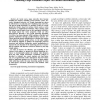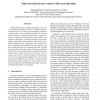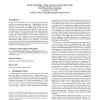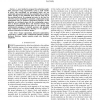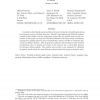767 search results - page 22 / 154 » On Clustering Using Random Walks |
ICDM
2010
IEEE
13 years 6 months ago
2010
IEEE
In recent years, many networks have become available for analysis, including social networks, sensor networks, biological networks, etc. Graph clustering has shown its effectivenes...
ISPDC
2008
IEEE
14 years 3 months ago
2008
IEEE
Self-stabilizing token circulation algorithms are not always adapted for dynamic networks. Random walks are well known to play a crucial role in the design of randomized algorithm...
SIGIR
2006
ACM
14 years 2 months ago
2006
ACM
We present a novel framework for answering complex questions that relies on question decomposition. Complex questions are decomposed by a procedure that operates on a Markov chain...
PAMI
2006
13 years 8 months ago
2006
Abstract-- A novel method is proposed for performing multilabel, interactive image segmentation. Given a small number of pixels with user-defined (or pre-defined) labels, one can a...
TIT
2010
13 years 3 months ago
2010
A variable-to-fixed length encoder partitions the source string into variable-length phrases that belong to a given and fixed dictionary. Tunstall, and independently Khodak, desig...
